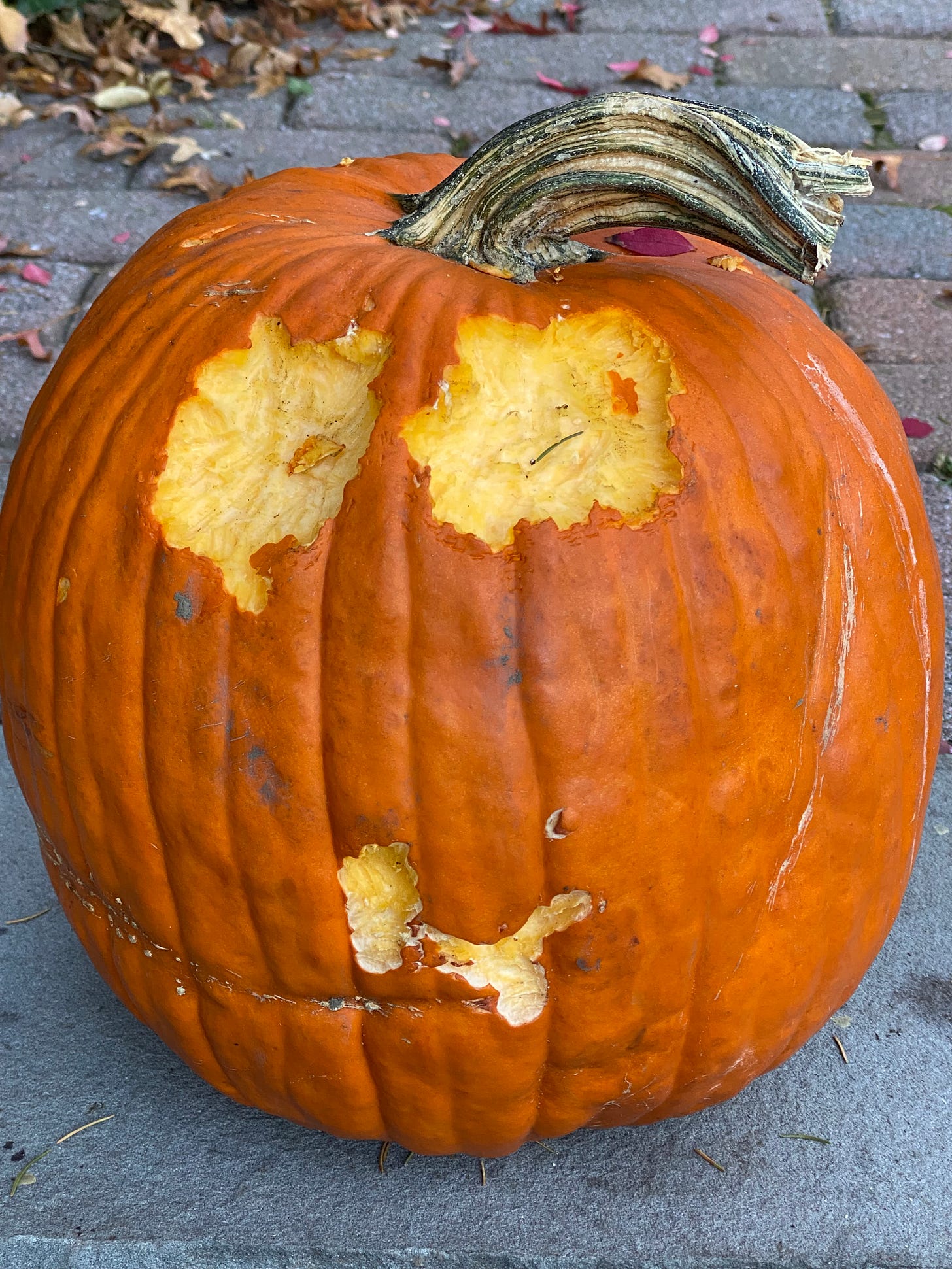I have ideas, notions, impulses all the time. I mostly respond to them by thinking a quick “huh” and letting them float by. That can be satisfying; the imagination lives many lives for us. Yet these impulses occur mainly in the mind; they do not engage all the senses. My habit of fantasizing about my ideas has kept me largely immobile, though not deprived. I have experiences way beyond my circumstances. I spent much of my childhood daydreaming, and now daydream fiction in the sunrise hours. But there are other possibilities, from the neck down.
Recently I had an impulse involving trees. It came about after a session of a course I am taking where I spoke about the homely maple I see from my desk that became my pal and guru during the pandemic. The idea was to not just sit here looking at it—since yesterday a few more leaves have turned yellow, but it isn’t yet struggling with the drought as the oak is—but to go outside and…the phrase tree hugging came to mind. I have carried it since the hippie era, when it was used to demean the efforts of those who softies preferred nature to progress, and some who sought to protect land from deforestation for development by sitting in trees. Looking it up now, the phrase goes back to an incident in India in 1730 when a Hindu village clung to its trees to prevented them from being cut down even as the people were being slaughtered. (They prevailed in the end.) Also looking it up now, it has become a full-fledged practice, taught in courses and featured at spas. For my own part, my impulse came from a childhood craving to communicate with all the creatures of my backyard. I came to focus on animals, and flowers, while my trees have stood by.
Women in the Chipko movement in India clinging to a tree to prevent it from being cut down.
I walked toward my tree, which I have respectfully not given a human name. I felt sheepish. What took me so long? But its nature is patient, and I felt that as I approached. I asked permission to hug it, and pressed against the bark. Dear Reader, I hugged it. And felt all manner of roundedness and peace and connection and relief. Was it profound? It’s a scruffy tree in a yard of a house on a heavily trafficked street, not a specimen in an arboretum. If it were a candidate, it would be the one you could imagine having a beer with, if that was your thing. It didn’t feel profound, but I felt foolish for not having done this for the thirty years I have been living here. The possibility is right outside my door, and it’s free.
Ever sensitive to the pain of feeling left out, I went around to all the trees in the yard, embracing them and asking them if there was anything they wanted or needed. Two told me they need some ivy cut that was cannibalizing their nutrients. Water, they said, as we are in a drought. I assured them it would rain before they were in real trouble. As I went around, a recent conversation came to mind with a student about the need to offer the reader signposts as to where they were in a story or novel. There is a turn in the exact middle, for example, and similar shifts throughout. I think it’s worth spending time paying attention to the rhythms of breathing and walking and if possible to the feeling of blood passing through the body to be able to feel these same familiar rhythms in a text; readers can follow very complex language or ideas if the signposts are legible. These signposts are clearly spelled out in all the screenwriting books, but for fiction not written to a formula it takes some doing to figure out where they are needed, and that step may be passed over, and cause a manuscript to be passed over.
I am not reaching for an argument here, or making a point, but laying out my ruminations. From there I thought of October, the lost scent of burning leaf piles, the golden dust motes in the air, and words I love: All Hallow’s Eve, Hallowe’en, hallow, hallowed.
My pumpkin carved by squirrels.
Recent joys
Loved and Missed by Susie Boyt (more on this excellent novel soon)



Dear Reader, I hugged it. Oh, Lord. How I loved this. I think I'm gonna try this before all the bright leaves abandon my Japanese maple. Or should I say, give my maple its winter wardrobe.
Coincidentally, yesterday I mentioned that I missed a tree (the one that turned a fiery red in the October sun). People often ask me what I miss, having moved, and now I realize the answer is a certain red maple tree (and also my dear friends). Now I see I should have given it a goodbye hug! All to say you’ve done your usual magic of writing what feels so true (and never before said in that way). Extra love for the image of you making sure the other trees don’t feel left out.